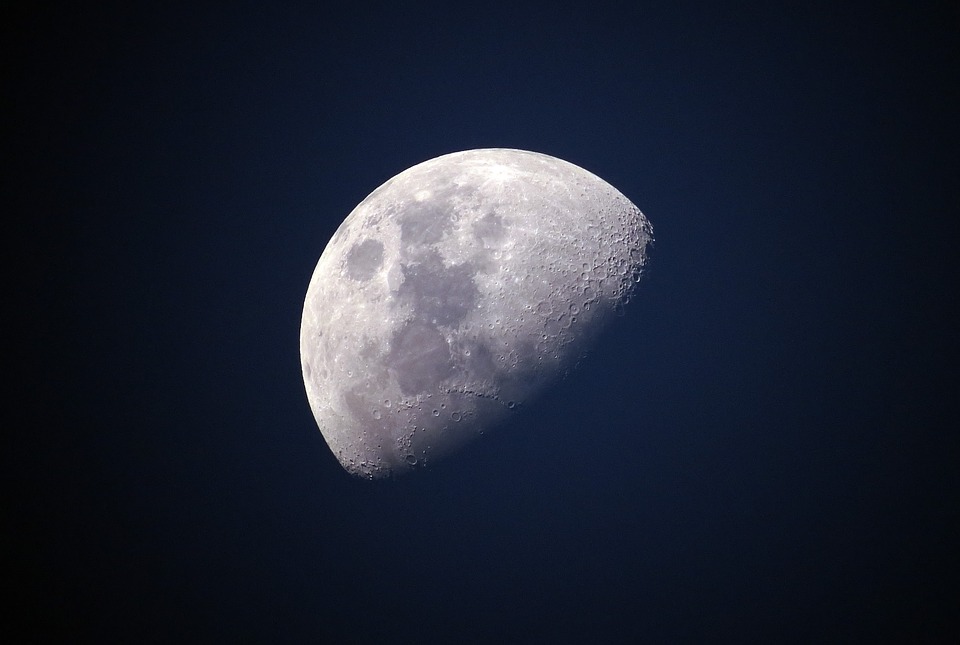
Isro's Chandrayaan-2 successfully enters orbit around Moon
In a major milestone for India’s moon mission, the Chandrayaan-2 spacecraft successfully entered the lunar orbit on Tuesday. Lunar Orbit Insertion manoeuvre was completed successfully at 0902 hours as planned, using the onboard propulsion system.

In a major milestone for India’s moon mission, the Chandrayaan-2 spacecraft successfully entered the lunar orbit on Tuesday. Lunar Orbit Insertion (LOI) manoeuvre was completed successfully at 0902 hours as planned, using the onboard propulsion system, the Bengaluru headquartered space agency said in a statement.
“The duration of manoeuvre was 1,738 seconds. With this, Chandrayaan-2 was successfully inserted into a lunar orbit,” ISRO said.

Following this, a series of orbit manoeuvres will be performed on Chandrayaan-2 spacecraft to enable it to enter its final orbit passing over the lunar poles at a distance of about 100 km from the moon’s surface, it said. Subsequently, the lander will separate from the Orbiter and enter into a 100 km X 30 km orbit around the Moon. Then, it will perform a series of complex braking manoeuvres to soft land in the South polar region of the Moon on September seven, ISRO said.
Later, at a press meet, ISRO Chairman K Sivan, said, “Our heart was almost stopping”, described the tense moments when team Chadrayaan-2 attempted to inject the spacecraft into the lunar orbit on Tuesday.
As ISRO scientists started firing Chandrayaan-2s onboard liquid engine to put the spacecraft in an orbit around the Moon, Sivan said, “our heartbeat increased”. “For 30 minutes, our heart was almost stopping,” he said after the Lunar Orbit Insertion (LOI) maneuver was completed successfully.
Also read: Why India must keep chasing its space dream
But Sivan said the proposed soft-landing on the Moon on September 7 is going to be a “terrifying” moment as it is something ISRO has not done before, whereas LOI maneuver had been carried out successfully during the Chandrayaan-1 mission also. “Now the tension has only increased, not reduced,” he said while addressing a press conference.
The health of the spacecraft is being continuously monitored from the Mission Operations Complex (MOX) at ISRO Telemetry, Tracking and Command Network (ISTRAC) in Bengaluru with support from Indian Deep Space Network (IDSN) antennas at Bylalu, near Bengaluru.
The next Lunar bound orbit manoeuvre is scheduled on Wednesday between 12.30 PM and 1.30 PM, ISRO said. Chandrayaan-2, launched on July 22 by GSLV MkIII-M1 vehicle, had entered the Lunar Transfer Trajectory on August 14.
Also read: Chandrayaan 2, India’s ambitious mission to moon
According to ISRO, Chandrayaan-2 – India’s second lunar expedition – will shed light on a completely unexplored section of the Moon its South Polar region. “This mission will help us gain a better understanding of the origin and evolution of the Moon by conducting detailed topographical studies, comprehensive mineralogical analyses, and a host of other experiments on the lunar surface,” the space agency said.
#ISRO
Lunar Orbit Insertion (LOI) of #Chandrayaan2 maneuver was completed successfully today (August 20, 2019). The duration of maneuver was 1738 seconds beginning from 0902 hrs ISTFor more details visit https://t.co/FokCl5pDXg
— ISRO (@isro) August 20, 2019
“While there, we will also explore discoveries made by Chandrayaan-1, such as the presence of water molecules on the Moon and new rock types with unique chemical composition,” it said.
Also read: What makes a Chandrayaan scientist? Humble roots, rocketing passion
Chandryaan-2 comprises an Orbiter, Lander (Vikram) and Rover (Pragyaan). The mission life of Orbiter will be one year whereas the mission life of lander (Vikram) and rover (Pragyan) will be one Lunar day which is equal to fourteen earth days.
The process of setting down Chandrayaan-2 on the moon was very complex since it blasted off at a velocity of 39,240 kilometres per hour, which is almost 30 times the speed at which sound travels through air.
Also read: ISRO releases first set of earth pictures captured by Chandrayaan 2


